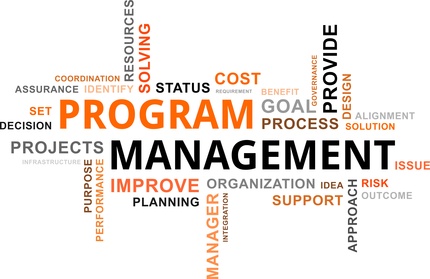
Stay in the manufacturing game – avoid common program management pitfalls.
In today’s business environment, manufacturing leaders must do more with less – and deliver superior customer service at the same time. In my 25 years of experience as an operations executive and global business consultant, I’m seeing an unprecedented number of projects that must be run simultaneously to deliver business objectives. Juggling multiple balls at once successfully has become a baseline requirement. Thus, program management is essential – those who succeed will “stay in the game”. Since there is no time to waste, it’s essential to avoid common pitfalls. 6 pitfalls to avoid include:
- Don’t jump into program management without a clear objective: Certainly each project has an objective; however, do they combine to create a program? If there is no overarching objective the company wishes to achieve, program management will likely fail. Too much to do with too few seasoned project leaders with no time. For example, my client that put together a series of projects related to moving from a manual process to leveraging a fully integrated system with a robust process was successful because the program objective was clear. Many others had a disparate list of projects which conflicted and ended in frustration and disappointment.
- Don’t assign the program manager to be a project manager: Of course it is tempting to ask your best resources to fill several roles; however, the only way for a program manager to continually look across projects for trends, opportunities and roadblocks is to remain impartial. It is only natural to become consumed with your project if you are also the project leader. If you are limited on resources, the program manager can fill in but someone else should have the ultimate authority and responsibility.
- Don’t work on each project separately: One of the key benefits of having a program manager is to provide support to the projects. Look for trends which can be leveraged across all projects. Look for roadblocks in common – or common elements. Focusing on distinctions among the projects will help to focus attention on the ‘right’ places.
- Don’t think all projects are created equal: Of course each project leader believes his/her project is the most critical for success; however, the program manager must look across projects for the project or the task which is most critical for success of the program objective. Prioritization is essential in resolving conflicts, assigning resources, etc. The job of a program manager is to help each project leader understand his/her value to the program and any key tasks essential to program success.
- Don’t focus on correcting weaknesses: Building on strengths has proven to be far more effective than correcting weaknesses. In my experience, it often provides a 10 to 1 return. Look across the program for strengths. How can they be leveraged effectively? How can you build upon the strengths to achieve project and program results?
- Don’t forget about connections: Links between projects typically are the 80/20 of success. Which tasks are related to multiple projects? Which tasks connect resources from multiple projects? Which tasks are required from 1 project to support the success of another project? Look for links and connections continually. Focusing extra attention on these tasks can be a secret to success.
Delivering program results is vital to company success in today’s new normal business environment. Those program managers who focus on the ‘right’ things will accelerate results. Therefore, make sure to navigate the waters to avoid the pitfalls, and you’ll have a leg up on the competition.
Originally published in Project Times


